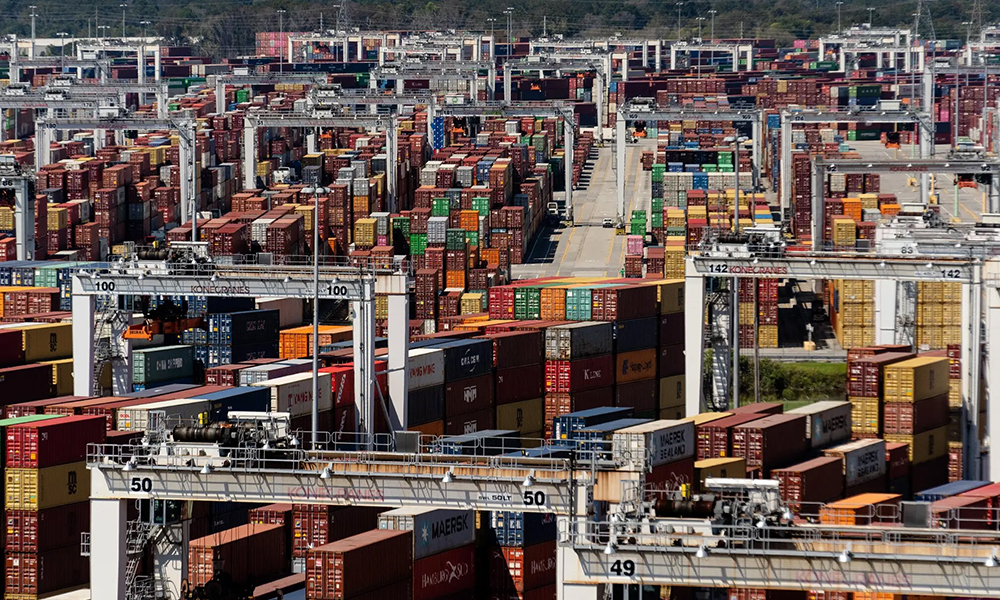
If you live on either coast of our nation and happen to look out to sea, you may see numerous small dots on the horizon. No, those aren't sharks or birds; those are container ships waiting to get into port and unload. Since the start of the pandemic, trans-oceanic shipping has been affected. It started with the consumer hesitancy to visit retail stores and outlets due to fear of COVID-19; the result was a dramatic increase in shopping online, often direct from the manufacturer. It has turned into a nightmare called the Great Supply Chain Calamity for many US industries, and healthcare is no exception.
On the west coast, where most imports from Asia arrive in the United States, over 200,000 shipping containers are waiting to dock at the Port of Los Angeles or the Port of Long Beach to unload (as of this writing). These two ports typically handle 40% of all container traffic in the United States. As of a week ago, over 80,000 shipping containers were waiting off of the Port of Savannah. These two ports are responsible for offloading more than half of the United States imported goods. Before the pandemic, the average 'dwell time' for container vessels (the time a ship spends in port being unloaded) in the United States ports was 28.2 hours*. The current average dwell time for container vessels is between 5 and 7 days, with an additional 10-15 days before the containers can be loaded onto the rail hubs for distribution throughout the United States**.
So why the delays?
First, in the United States, the demand for consumer goods has been up 22% since
the beginning of the pandemic***. This number is not for the upcoming holiday
season but across the eighteen months since February 2020.
The second
major factor, and arguably the most significant factor, is the labor shortage at
all points in our supply chain. Currently, there is not enough port staff to
unload the ships, enough truck drivers to haul the containers, nor enough rail
staff to load many of the containers onto the trains that would disburse these
goods across the United States. The result is that the ships are forced to wait
days instead of hours waiting to dock, then the containers are being stacked at
the ports for a few additional days, then they are being stacked for a few more
days waiting to be loaded onto the rails lines. This domino effect extends
further because of the delay in getting these containers offloaded at the
destination warehouses of retailers; there is a shortage of shipping containers
in the manufacturing countries. This effect dominoes into longer time that goods
are sitting in warehouses overseas waiting for freight space to travel to the
United States. In the next step of the chain, cargo ships are being delayed in
foreign ports as holding areas for container ships because of the logjam at the
US ports. All of these factors and more are exacerbating the issue, and right
now, there is no clear end in sight.
What is being done to solve this nightmare?
The Port of Savannah, the third-largest port in the United States, has recently
started a $600 million expansion. This expansion would increase the berth's size
to accommodate larger ships, extend the storage yard to hold an additional 6000
more containers, and expand the rail hub of the port from five to eighteen. But
even with the expanded port, the continuing issue will be the lack of employees
necessary to offload, store, and transfer the containers.
Meanwhile, with
over $24 billion waiting on ships outside the Port of Los Angeles and the Port
of Long Beach, the holding terminals are now open round the clock to try and
relieve the holding areas. But this effort has been unsuccessful so far. At one
privately-held holding facility in Long Beach, CA, 2000 available appointments
were unfilled for truckers to pick up containers. New laws prohibiting older
model trucks from accessing the ports and laws mandating only electric vehicles
by 2030 are deterring freight companies and independent truckers from upgrading
their fleets. To incentivize shipping carriers to pick up their freight in a
more timely manner, the Ports of Los Angeles and Long Beach will start imposing
a $100 fee per day for each container that remains on the dock for more than
three days for those containers scheduled to be moved by rail. The fine also
applies to containers that sit for nine days if the containers are slated to be
moved by truck. Each day that the container sits past these dates will result in
an additional $100 fee. But with many warehouses full, where will the trucks
deliver the containers too?
But will these changes have any effect on the supply chain problems?
When asked about the changes in California, Narin Phol, Maersk North America regional managing director, said, "Operational details still need to be worked out on 24/7 operations at the ports of Los Angeles and Long Beach. This level of operations is not an overnight, simple solution to implement — and does not solve the broader supply chain capacity challenges and shortage of workers in trucking, warehouse and supply chain jobs." And with the seven largest publicly traded shipping lines reporting a $23 billion loss in the first half of 2021, many logistics professionals may resort to limiting their deliveries to the United States.
So what can the medical imaging industry do?
With most manufacturers of medical imaging equipment shipping their units from Asia, shipping delays are inevitable. Many healthcare systems will purchase new equipment or replace existing aging equipment as we close out this year. Effective planning and forecasting will mitigate most shipping delays and allow for a timely installation of your new equipment.
- * Hu, Patricia S., et al. "Port Performance Freight Statistics in 2019: Annual Report to Congress 2020." United States. Department of Transportation. Bureau of Transportation Statistics, 1 Jan. 2021, doi:10.21949/1520450.
- ** "US Port Terminal Congestion & Rail Delays - Laufer Group International." Laufer Group International, 2 Oct. 2020, lgi.laufer.com/insights/us-port-terminal-congestion-rail-delays.
- *** Luxen, By Jack Goodman & Micah. "Shipping disruption: Why are so many queuing to get to the US?" BBC News, 16 Oct. 2021, www.bbc.com/news/58926842.









 ©
- CMS Imaging, Inc. All Rights
Reserved
©
- CMS Imaging, Inc. All Rights
Reserved

Comments
Leave a Comment